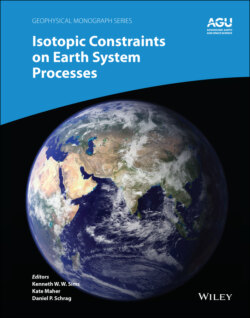Читать книгу Isotopic Constraints on Earth System Processes - Группа авторов - Страница 67
ABSTRACT
ОглавлениеCalcium isotope ratios are readily mass‐fractionated by low‐temperature depositional processes that can be recorded in sedimentary rocks and, therefore, have the potential to track distinct geochemical signatures of recycled materials in mantle‐derived igneous rocks. In this study, I report calcium isotopic compositions for well‐characterized lavas from the Central American volcanic arc that exhibit a range of trace element and radiogenic isotope signatures that have been used to indicate variable amounts of subducted marine carbonate and hemipelagic sedimentary rocks, fresh carbonatite lavas from Oldoinyo Lengai Volcano, Tanzania, and an intrusive carbonatite clast erupted 12.8 ka from the Laacher See Volcano, Germany. I observed no calcium isotope evidence for recycled sedimentary rocks in the Central American arc magmas or in the Oldoinyo Lengai carbonatite volcanic rocks. They all exhibit isotopic compositions similar to rocks dominated by a primitive, mantle‐like, bulk silicate Earth (BSE) composition. The exception in this work is the calcium isotope composition measured in the intrusive Laacher See carbonatite that is resolvable from BSE (δ44Ca = 0.0). Although this calcium isotopic signature might be related to ancient carbonate recycling, the magnitude and relatively light calcium isotopic composition (δ44Ca = –0.4) of this carbonatite could also reflect an origin that involved partial melting of altered lithospheric mantle, from which isotopically heavy Ca‐bearing fluids have been lost. The decoupled signatures between trace elements and their radiogenic isotopes and those recorded by calcium isotope data are important because they likely reflect different sources and processes, and demonstrate that sediment subduction is not a bulk mixing process.
